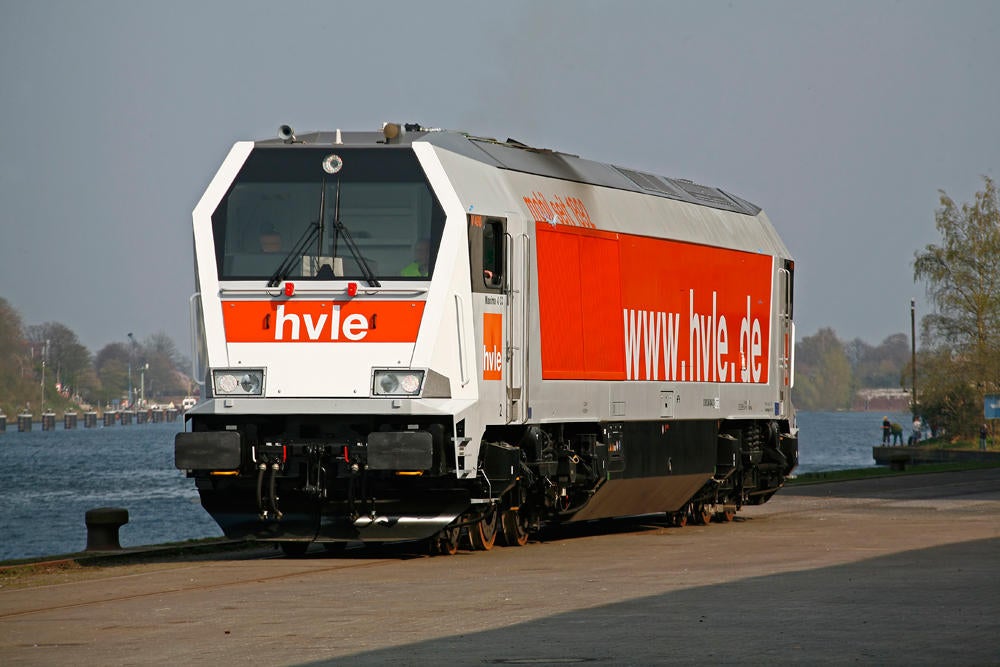 by "Cé hé sin" (michael-m-mouse)
by "Cé hé sin" (michael-m-mouse)
Published 03/12/2017 at 17:44
 by "Cé hé sin" (michael-m-mouse)
by "Cé hé sin" (michael-m-mouse)
Published 03/12/2017 at 17:44
Tags: Voith
; Maxima
; Trainlopnik
STARS: 11
Time was when many thought two gears was adequate. GM made two speed automatics for many years. Later Honda used the Hondamatic, a manually operated two speed with torque converter which appeared in many cars and fewer bikes. I’ve got a vague memory of being on two speed buses. But the two speed was abandoned years ago, wasn’t it?
Nope.
Voith are a German company who make a wide variety of things. Amongst these are hydrodynamic transmissions for rail use. In the 2000s Voith were approached by a customer who wanted to build a powerful locomotive and wanted a hydrodynamic transmission for it. Voith got to work. Just as they were done the customer had a change of plan and said “nein, danke”. What to do, after all that effort? Why, get into the loco business of course and so it was done. Voith designed a small shunter using their existing transmission and the Maxima, the most powerful single-engined diesel loco built.
Here we see one.

Yes it is from the New Brutalist school of industrial design, isn’t it? Looks like it’s designed to move really big things without much regard for being able to slip easily through the air.
Anyway, the Maxima had two speeds. Not two gears mind, two speeds. It had only one gear. How so? When starting the one gear was driven by a torque converter which provided lots of torque at the expense of efficiency. At higher speeds the torque converter is drained and a fluid coupling is filled. The coupling drives exactly the same gear but as it slips less so the overall effect is of a higher speed.
You want to know how this setup copes with starting something really, really heavy, don’t you? Of course you do. Here we go with , according to the author, three thousand-odd tonnes.
!!! UNKNOWN CONTENT TYPE !!!
There are in-cab videos of these and until boredom set in I watched a speedometer taking an unconscionably long time to drag itself to 30 kmh with occasional breaks to watch the revs inch up from about 880, one rpm at a time.
So there you have it. How to get two speeds from one gear and put them to hard work.
The Maxima sadly was a commercial failure and not all of the 30 or so made were sold. Voith switched to repair work and later announced the closure of the factory.
 "Tohru" (tohrurokuno)
"Tohru" (tohrurokuno)
03/12/2017 at 19:28, STARS: 0
Advancements happen slowly. I drive a 1994 Buick with a 3-speed - no overdrive.
 "eftalanquest" (eftalanquest)
"eftalanquest" (eftalanquest)
03/13/2017 at 13:58, STARS: 1
!!! UNKNOWN CONTENT TYPE !!!
let me introduce you to the Gravita, a real crapshoot of a shunting locomotive. there are two different version of it: the 1000 kW 10 BB and the 1800 kW 15L BB. apart from the really neat Vectron DE both are my daily grind.
the 10 BB:

the 15L BB looks pretty much the same but it’s a meter longer to make space for the larger engine.
recently all 15L BB’s (31 of them belong to my employer Deutsche Bahn) had to be deactivated because the transmission failed (one reason why we rented the Vectron).
 "Cé hé sin" (michael-m-mouse)
"Cé hé sin" (michael-m-mouse)
03/13/2017 at 15:07, STARS: 0
Shunter/freight locos all look exactly the same don’t they?
I’m surprised they had transmission problems, Voith hydrodynamic units are usually bullet proof.
 "eftalanquest" (eftalanquest)
"eftalanquest" (eftalanquest)
03/13/2017 at 15:12, STARS: 0
yeah they usually are, our 29x class locos are running them since the late 60's. the gravita however is a whole different story...
 "mallthus" (mallthus)
"mallthus" (mallthus)
03/20/2017 at 16:17, STARS: 0
They did happen slowly. The reign of the 2-speed was about 30 years (1947-first Dynaglide in series production, to 1979-last 2 speed Hondamatic). The overlapping reign of the 3-speed was 1939 to the early 1990s, so about 50 years. But in the last 20 years, we’ve gone to 4-speeds, then 5-speeds, 6-speeds, and now 8 and 20 speed transmissions are common. So, the moment in the sun for any particular gear set is now averaging less than 10 years. And, it’s reasonable to assume, that these transmissions will represent the pinnacle of gear counts, as electrics and CVTs pretty much make the traditional automatic obsolete for all but specialist applications.
To be fair, Toyota still has 4 speeds, but they’re the minority, knowing their customs are loyal and thus will buy whatever garbage Toyota throws their way.